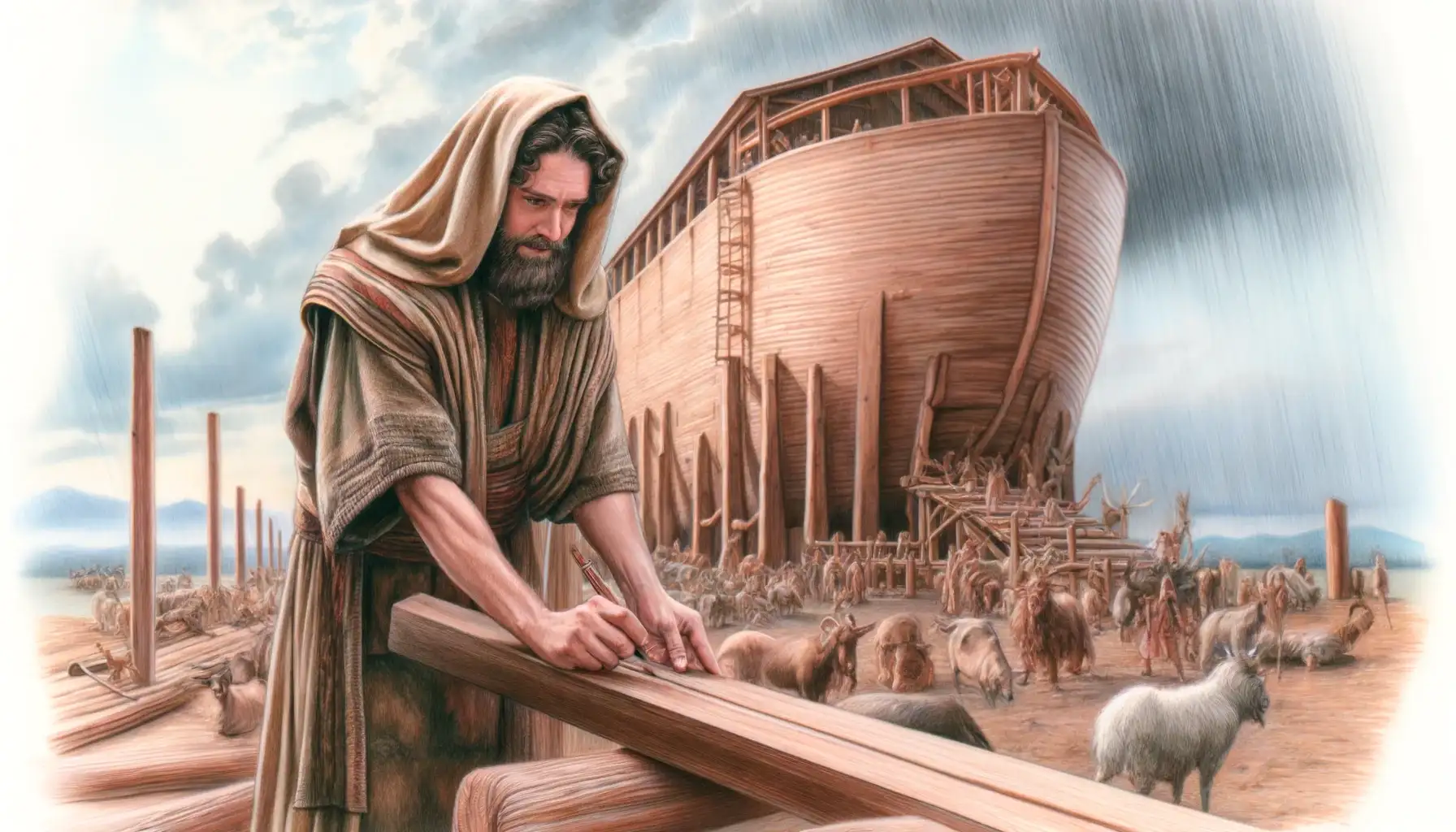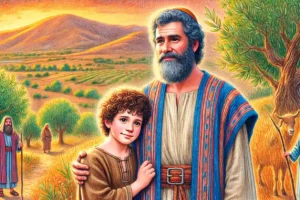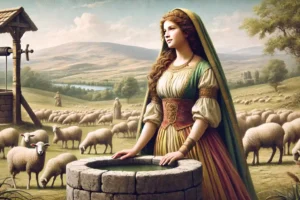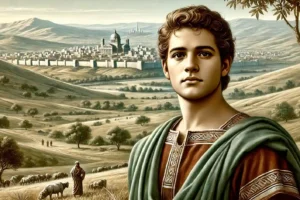
Noah: Righteous Man who Built the Ark to Survive the Flood
Noah, a pivotal figure in the Hebrew Bible, is known for his righteousness and obedience to God. He built an ark to survive the Great Flood, preserving human and animal life and becoming a symbol of faith and perseverance.
Quick Facts
- Righteous Man: Noah is described as a righteous and blameless man in his generation (Genesis 6:9).
- Divine Warning: God warned Noah about the impending Flood due to humanity’s wickedness.
- Builder of the Ark: Noah built an ark as instructed by God, using precise measurements and materials (Genesis 6:14-16).
- Preserver of Life: He brought his family and pairs of every kind of animal into the ark to survive the Flood.
- The Flood: The Flood lasted 40 days and 40 nights, covering the earth and destroying all living things outside the ark (Genesis 7:12).
- Covenant with God: After the Flood, God established a covenant with Noah, symbolized by a rainbow, promising never to destroy the earth with a flood again (Genesis 9:11-13).
- Noah’s Sons: Noah had three sons, Shem, Ham, and Japheth, who repopulated the earth after the Flood.
- Legacy: Noah is remembered for his faith, obedience, and role in preserving life during the Flood.
Righteous Man
Noah is introduced in Genesis 6:9 as a righteous man, blameless among the people of his time, who walked faithfully with God. This description sets him apart from the corrupt and violent society in which he lived. Noah’s righteousness and faithfulness made him the chosen vessel for God’s plan to preserve life on earth.
Divine Warning and Instructions
God decided to send a great flood to cleanse the earth of its wickedness but chose to save Noah and his family. God gave Noah specific instructions to build an ark, providing detailed measurements and materials (Genesis 6:14-16). Noah’s obedience in following these divine instructions exemplifies his faith and trust in God’s plan.
Builder of the Ark
Noah built the ark according to the specifications given by God. The ark was made of gopher wood and coated with pitch inside and out. It had three decks and compartments for housing various species of animals (Genesis 6:14-16). This monumental task required significant effort, skill, and unwavering faith in God’s word.
Preserver of Life
Noah’s role as the preserver of life is central to his story. He brought his family—his wife, his sons, and their wives—into the ark. Additionally, he gathered pairs of every kind of animal, bird, and creeping creature to ensure their survival during the Flood (Genesis 6:19-20). This act of preservation underscores the importance of stewardship and care for God’s creation.
The Flood
The Flood narrative describes torrential rains lasting 40 days and 40 nights, leading to the complete inundation of the earth (Genesis 7:12). The waters rose and covered even the highest mountains, destroying all living things not sheltered in the ark. After the rain ceased, the waters gradually receded, and the ark came to rest on the mountains of Ararat (Genesis 8:4).
Covenant with God
Upon leaving the ark, Noah built an altar and offered sacrifices to God. In response, God established a covenant with Noah and his descendants, promising never to destroy the earth with a flood again. The rainbow was given as a sign of this covenant, symbolizing God’s mercy and faithfulness (Genesis 9:11-13).
Noah’s Sons and Their Descendants
Noah’s three sons, Shem, Ham, and Japheth, played a crucial role in repopulating the earth. The genealogies in Genesis 10 detail the nations that emerged from their descendants, laying the foundation for the post-Flood world.
Theological Themes
- Faith and Obedience: Noah’s unwavering faith in God’s instructions and his obedience in building the ark highlight the importance of trust and action in response to divine guidance.
- Judgment and Mercy: The Flood narrative reflects themes of divine judgment against sin and the subsequent mercy shown through the preservation of Noah and his family.
- Covenant Relationship: The covenant established with Noah emphasizes God’s commitment to humanity and His creation, symbolized by the rainbow as a sign of enduring promise.
Legacy and Impact
Noah’s story has had a profound impact on religious thought and tradition. His example of faith and obedience is frequently cited in biblical teachings. The narrative of the Flood serves as a powerful reminder of the consequences of sin and the importance of righteousness. Additionally, the covenant with Noah underscores the enduring nature of God’s promises.
Conclusion
Noah, the righteous man who built the ark to survive the Great Flood, stands as a testament to faith, obedience, and divine preservation. His story emphasizes themes of judgment, mercy, and the importance of maintaining a covenant relationship with God, leaving a lasting legacy in biblical history.
Tag:Ark, Covenant, Faith, Flood, Genesis, Noah, obedience, preservation of life, Righteousness



